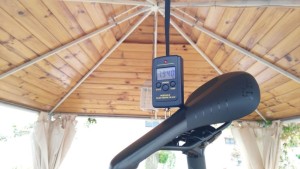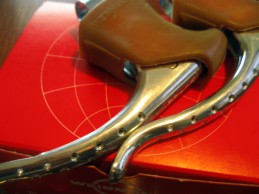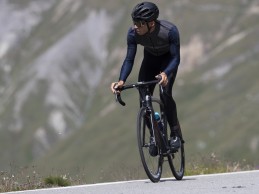Weight VS Aerodynamics on the road, which is more important?
The weight of bikes has always been the most valued element by cyclists and continues to be so despite the fact that engineers have been insisting for some years now that it is much easier to obtain performance benefits from improved aerodynamics than from the reduction of a few grams. We explain how each one influences the other.

Not so marginal gains
We all know that to improve on the bike there is no choice but to train hard and take good care of ourselves. However, beyond this, and the tremendous effort involved, there is always the search for other ways to improve for free.
Traditionally, weight has been the obsession of cyclists. Beyond the weight of the rider himself, the main point to work on for those of us who are not professionals, the bikes have been tuned to such an extent that the UCI had to set a lower limit of 6.8 kg, to prevent the weight reduction of the bikes from getting out of hand to levels that could compromise the reliability of the bikes.
RECOMENDADO

Change wheels if you want to transform your bike's behavior

What bike size do you need? Here's how to find out

How does age affect performance and recovery?

10 tips for safer and faster downhills on road bikes

The best gravel groupsets of the moment

How to lose body fat? Differences between losing weight and losing fat

We are all familiar with images of levers and chainrings drilled by their users to shave off every gram, or exotic components to achieve a minimal reduction in the figure on the scales.
Although people still weigh the bike to assess whether it is a good machine, in the last decade the trend has changed with the development of aerodynamics, an aspect that seems like a witch's trick because its effects are not so noticeable, but that, numbers in hand, makes possible much greater gains than those provided by the reduction of the bike's weight.
In fact, in recent years, kilos have taken a secondary role. The introduction of disc brakes on bikes or aerodynamic features such as fully internal cable routing have brought with them an increase in the average weight of bikes that has distanced them from the UCI limit which, not so long ago, seemed to be obsolete. Nowadays, not even the bikes of the pros can reach this limit, whereas not so long ago, team mechanics were forced to weight the bikes to comply with it.
For climbs only
The traditional importance that weight has had in cycling is due to the importance that climbs have had in the outcome of races. In this field, the famous W/Kg ratio, which puts in proportion the power that the cyclist is able to generate with the mass that he has to move, becomes crucial as he has to overcome the force of gravity.

However, several field studies have made it clear that although the weight of the cyclist plays an important role in terms of tangible figures that can make a lot of watts of difference when climbing, especially when the slopes exceed 8%, let alone when facing hard walls, the mere 1 kg of difference that can occur between two medium/high range bikes only means a change of a few seconds, and always talking about climbs with a significant slope.
On most climbs, those that are steep and constant, the differences attributable to weight are practically negligible and, often, because of the speed at which these climbs are tackled, more than 20 km/h, aerodynamics become more important in performance than weight.
Riding through air
When we pedal a bike, we are riding through air, a fluid of a certain density that opposes our progress. The mission of aerodynamics is to find a way to get through the air with as little resistance as possible.
Although many deny the effects of wind resistance reduction, as they are often the result of a sum of small gains and therefore difficult to quantify for the average cyclist, almost all of us take advantage of it whenever we can.

The greatest expression of aerodynamic gain is something as common as riding behind the cyclist in front. The rider in front has to break the surface tension of the fluid, while the rider behind has to make much less effort by taking advantage of the vacuum left behind the breaker and, at the same time, having to pass through a fluid whose particles are already "broken".
Virtually any element that has to pass through the air has an influence on aerodynamics and we can act on many aspects to bring about an improvement without influencing other parameters.
The first of these is the position on the bike, trying to offer as little frontal area, the amount of the bike/cyclist combination that has to pass through the airflow, as possible. This is achieved with a more compact position, which means the rider is as horizontal as possible, and narrower, which is achieved, for example, with the increasingly popular narrow handlebars.

Clothing is another essential aspect, making sure that it fits as close to the body as possible, avoiding folds that can cause turbulence in the airflow, not to mention the huge improvement over those who wear loose-fitting garments.
Beyond that we would have to go to the specific material. Almost all current bikes try to add improvements in this aspect to a greater or lesser extent. Then there are clearly aerodynamic bicycles that prioritise this parameter with strong profiles in their tubes and wheels and components that are also highly aerodynamic.
In any case, the individual advantages offered by aerodynamic components are small on their own, it is the sum of several and their interaction that really makes a difference.

This last aspect is important because, for example, a helmet can be very aerodynamic for a certain rider and very little for another rider with a different position on the bike, which is why finding the right one is not as easy as simply subtracting grams.
What should we choose?
As always, it depends. Obviously, if we are a small cyclist and we regularly ride in hilly terrain, the weight parameter will be more important for us. In any case, the weight of the body is always more important than the weight of the bike. It is ironic to see cyclists spending huge amounts of money to shave a few hundred grams off the bike when they clearly have 4 or 5 kilos to spare.
However, in the terrain that most cyclists ride on: flat terrain and more or less steep climbs, aerodynamics become essential and can offer a good saving in watts. Obviously, the first step here would be to start by fine-tuning your position on the bike rather than resorting to specific equipment.

Of course, if we are going to change bikes, our decision should take into account which parameter we want to prioritise. If the vast majority of our rides are on flat terrain, it's probably worth sacrificing a few hundred grams and opting for a model with an aerodynamic cut, even though we won't be able to show off our bike as much when our group mates make the gesture of weighing up our bike.